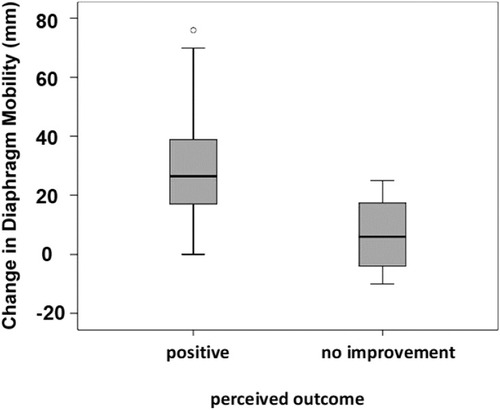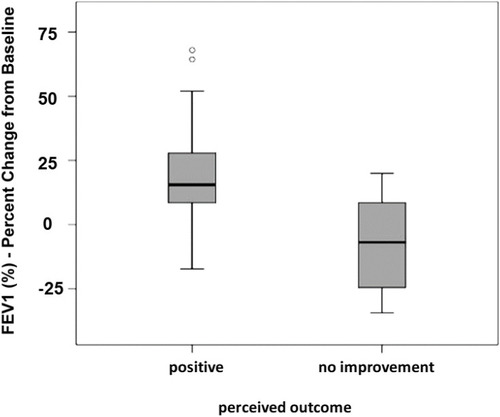Figures & data
Table 1 Patients Who Developed an Atelectasis Achieved a Higher Increase in Diaphragm Mobility Than Those Who Did Not
Table 2 All 30 Patients Who Had Developed an Atelectasis Perceived a Positive Outcome After ELVR. Of the 14 Patients Who Had Not Developed an Atelectasis, 6 Patients Perceived a Positive Outcome After ELVR, Too
Figure 1 Patients who perceived a positive outcome after ELVR had a higher increase in diaphragm mobility than those with no perceived improvement in treatment outcome. The 36 patients who perceived a positive outcome after ELVR had a mean increase in diaphragm mobility of 28.89 ± 17.25 mm. The patients with no perceived improvement in treatment outcome after ELVR also had an increase in diaphragm mobility but only of 6.75 ± 12.76 mm.

Figure 2 Patients who perceived a positive outcome after ELVR had a higher increase in FEV1 than those with no perceived improvement in treatment outcome. The patients who perceived a positive outcome after ELVR had an increase in FEV1 of 18.5%, whereas the patients with no perceived improvement after ELVR had a decrease in FEV1 of 11.1%.

